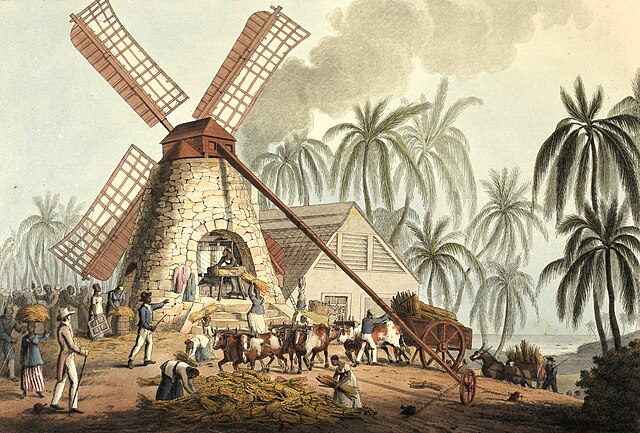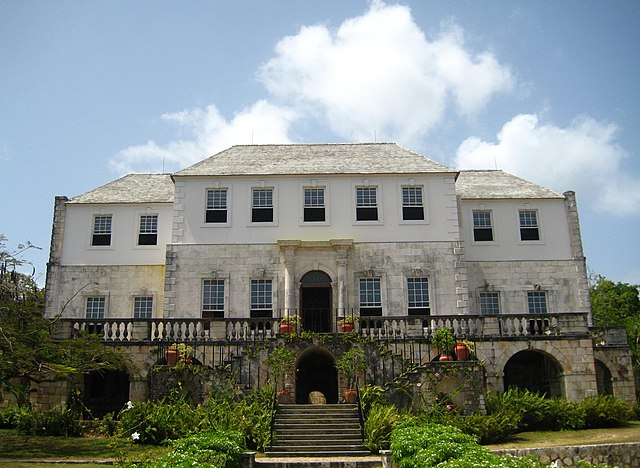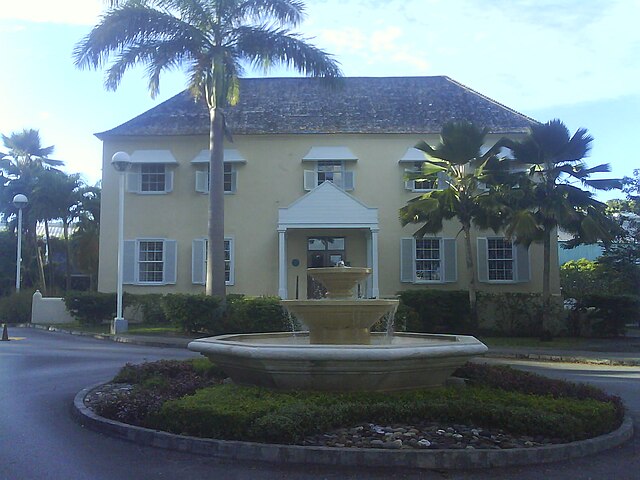Sugar production in the Danish West Indies
Sugar production in the United States Virgin Islands was an important part of the economy of the United States Virgin Islands for over two hundred years. Long before the islands became part of the United States in 1917, the islands, in particular the island of Saint Croix, was exploited by the Danish from the early 18th century and by 1800 over 30,000 acres were under cultivation, earning Saint Croix a reputation as the "Garden of the West Indies". Since the closing of the last sugar factory on Saint Croix in 1966, the industry has become only a memory.
A typical sugar plantation in West Indies
Sugar mill
Sugar farmers in Bethlehem, Saint Croix in December 1941
The ruined remains of a sugar mill in the US Virgin Islands
Sugar plantations in the Caribbean
Sugar plantations in the Caribbean were a major part of the economy of the islands in the 18th, 19th, and 20th centuries. Most Caribbean islands were covered with sugar cane fields and mills for refining the crop. The main source of labor, until the abolition of chattel slavery, was enslaved Africans. After the abolition of slavery, indentured laborers from India, China, Portugal and other places were brought to the Caribbean to work in the sugar industry. These plantations produced 80 to 90 percent of the sugar consumed in Western Europe, later supplanted by European-grown sugar beet.
Rose Hall sugar plantation house, Jamaica
Warrens Great House, St. Michael, Barbados
Sugar plantation in the British colony of Antigua, 1823







